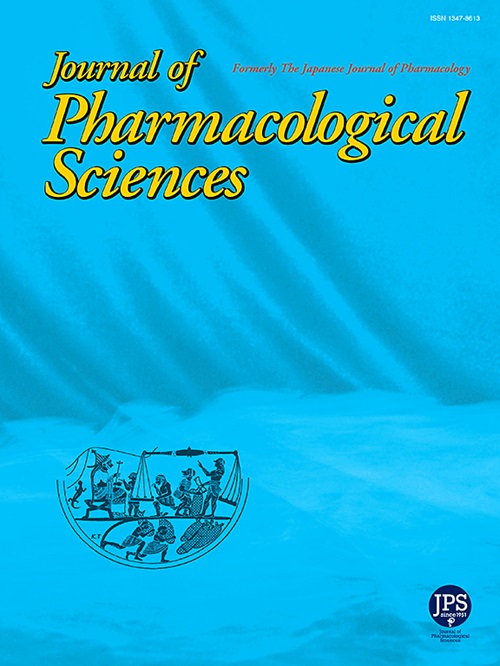(2R,6R)-hydroxynorketamine reverses mechanical and thermal pain hypersensitivity produced by the chemotherapeutic agent oxaliplatin in rats
IF 2.9
3区 医学
Q2 PHARMACOLOGY & PHARMACY
引用次数: 0
Abstract
Chemotherapy-induced peripheral neuropathy (CIPN) is a common and debilitating side effect of a number of anticancer drugs, like oxaliplatin, leading to chronic sensory hypersensitivity and neuropathic pain. This study investigated the efficacy of (2R,6R)-hydroxynorketamine ((2R,6R)-HNK), a metabolite of ketamine, in a rat model of CIPN induced by oxaliplatin. Rats treated with oxaliplatin developed long-lasting mechanical and thermal hypersensitivity, as assessed by the Von Frey test and the hot plate test, respectively. A single injection of (2R,6R)-HNK (30 mg/kg, s.c.) significantly reversed both mechanical and thermal hypersensitivity for up to 24 h. Furthermore, repeated treatment with (2R,6R)-HNK (30 mg/kg/day) for 7 days produced sustained analgesia on mechanical hypersensitivity that persisted up to 14 days after treatment cessation. In comparison, repeated duloxetine (15 mg/kg/day, s.c.) showed only a short-lasting reduction of thermal hypersensitivity and no effect on mechanical hypersensitivity. Locomotor activity was not affected by (2R,6R)-HNK treatment, although duloxetine caused a transient decrease. This is the first demonstration that (2R,6R)-HNK produced analgesia in a rat model of CIPN. The persistence of analgesia with repeated treatment and sustained effects following treatment cessation suggests that (2R,6R)-HNK may represent a promising new therapeutic strategy for the rapid and sustained relief of pain associated with CIPN.
(2R,6R)-羟诺氯胺酮逆转大鼠化疗药物奥沙利铂产生的机械和热痛超敏反应
化疗引起的周围神经病变(CIPN)是许多抗癌药物(如奥沙利铂)的常见和衰弱的副作用,导致慢性感觉超敏反应和神经性疼痛。本研究探讨氯胺酮代谢物(2R,6R)-羟诺氯胺酮((2R,6R)-HNK)在奥沙利铂诱导的大鼠CIPN模型中的作用。Von Frey试验和热板试验分别评估了奥沙利铂治疗大鼠出现持久的机械和热超敏反应。单次注射(2R,6R)-HNK (30 mg/kg, s.c)可显著逆转机械和热超敏反应长达24小时。此外,(2R,6R)-HNK (30 mg/kg/天)重复治疗7天,对机械超敏反应产生持续镇痛,持续到治疗停止后14天。相比之下,重复使用度洛西汀(15mg /kg/天,s.c)仅能短期减轻热过敏,对机械过敏没有影响。运动活动不受(2R,6R)-HNK治疗的影响,尽管度洛西汀引起短暂性下降。这是首次证明(2R,6R)-HNK在大鼠CIPN模型中产生镇痛作用。反复治疗后镇痛的持续性和停止治疗后的持续效果表明(2R,6R)-HNK可能是一种有希望的快速和持续缓解CIPN相关疼痛的新治疗策略。
本文章由计算机程序翻译,如有差异,请以英文原文为准。
求助全文
约1分钟内获得全文
求助全文
来源期刊
CiteScore
6.20
自引率
2.90%
发文量
104
审稿时长
31 days
期刊介绍:
Journal of Pharmacological Sciences (JPS) is an international open access journal intended for the advancement of pharmacological sciences in the world. The Journal welcomes submissions in all fields of experimental and clinical pharmacology, including neuroscience, and biochemical, cellular, and molecular pharmacology for publication as Reviews, Full Papers or Short Communications. Short Communications are short research article intended to provide novel and exciting pharmacological findings. Manuscripts concerning descriptive case reports, pharmacokinetic and pharmacodynamic studies without pharmacological mechanism and dose-response determinations are not acceptable and will be rejected without peer review. The ethnopharmacological studies are also out of the scope of this journal. Furthermore, JPS does not publish work on the actions of biological extracts unknown chemical composition.

 求助内容:
求助内容: 应助结果提醒方式:
应助结果提醒方式:


